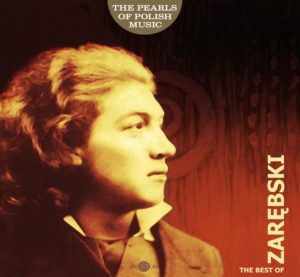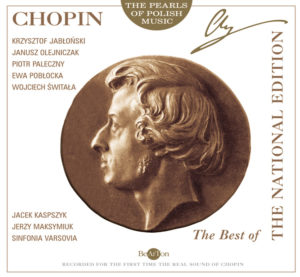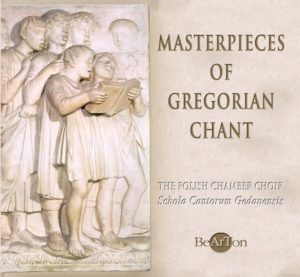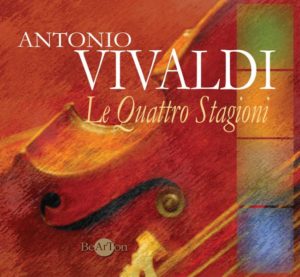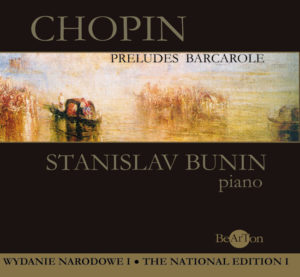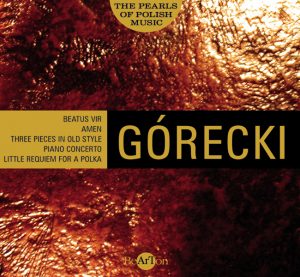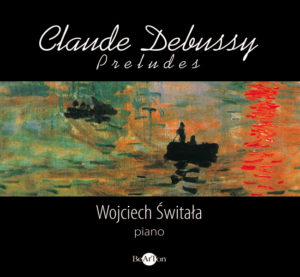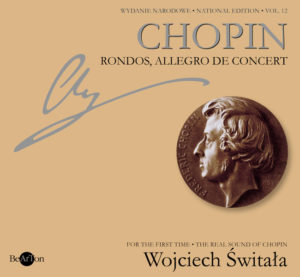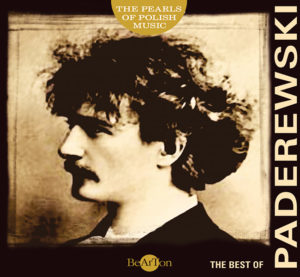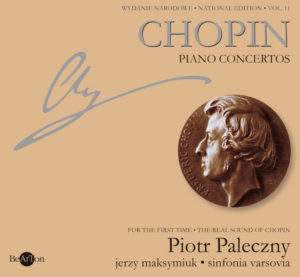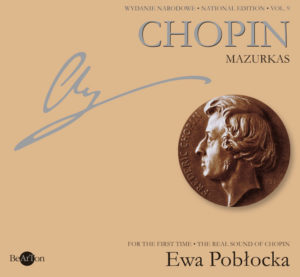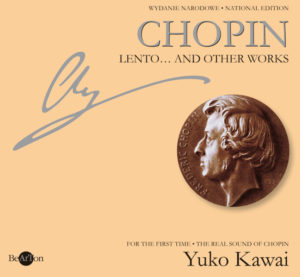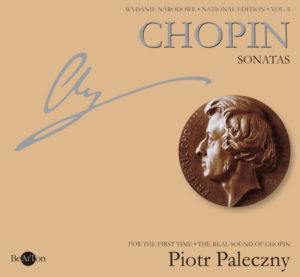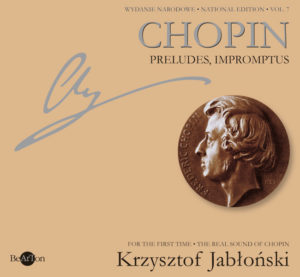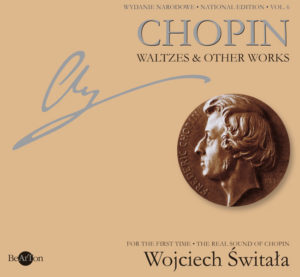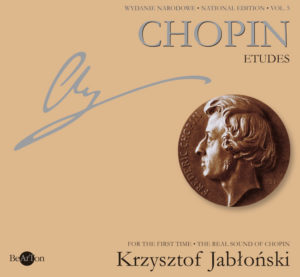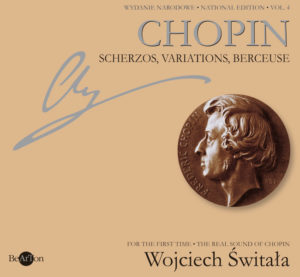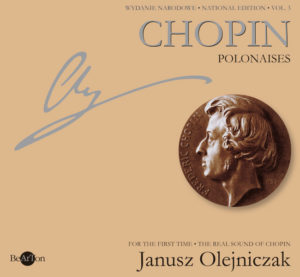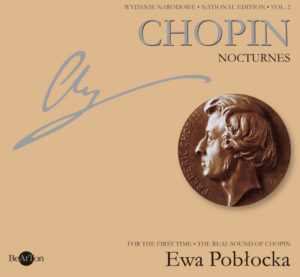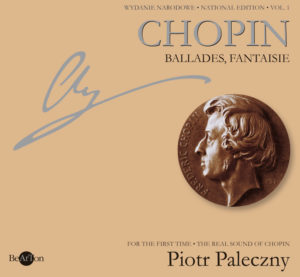Chopin Chamber Music
Chopin Chamber Music
Cat. No. CDB039
Music disc: SACD
Performers:
Konstanty Andrzej Kulka – violin
Krzysztof Jabłoński – piano
Tomasz Strahl – viola
Disc content:
Piano Trio Op.8
- Allegro con fuoco – 8’08”
- Scherzo Con moto, ma non troppo – 6’36”
- Adagio sostenuto – 5’53
- Finale Allegretto – 5’45”
Works for Piano & Cello:
- Polonaise Brillante op. 3 – 9’27”
- Grand Duo Concertant (arr. Auguste Franchomme) – 12’30”
Sonata op. 65
- Allegro moderato – 10’40”
- Scherzo (Allegro con brio) – 5’12”
- Largo – 3’56”
- Finale Allegro – 6’14
Total time – 74’50”
Listen a part
51.99złRead more
© ℗ 2007 Bearton
Fryderyk Chopin Chamber Works
Chopin’s chamber music output comprises only four compositions. All of them are with cello, an instrument for Chopin had a special fondness. Three are for piano and cello, the other is for violin, cello and piano. In all four works the piano is assigned the principal role. Two of these compositions have earned a lasting place in 19th-century chamber music
.
The Piano Trio in G minor Op. 8, with violin and cello, is the earliest piece. Written in 1828-1829, during Chopin’s studies with Elsner and dedicated to Antoni Radziwiłł, the work has all the features of the transitional period in the composer’s career. It is placed between the achievements of the style brillant (Rondo á la Krakowiak) and Chopin’s first emanation display of Romanticism (Concerto in F minor). It goes beyond the virtuoso display in style brillant and is a foretaste of early-Romantic expression. Classical in form, the work exhibits evident references to Schubert’s music in its Beethovenian version, i.e. with a Scherzo as its second and an Adagio its third movement. The opening Allegro brings a somewhat unconventional departure from this pattern with its different order of keys – the same in the exposition (G minor/G minor) and contrasted in the reprise (G minor/D minor). The dance-like Scherzo, with its perfect symmetry, follows the canons of the Classical approach whereas the Adagio, with its lofty and passionate mood, is par excellence Romantic. The dance stylization of the final rondo is that of the krakowiak.
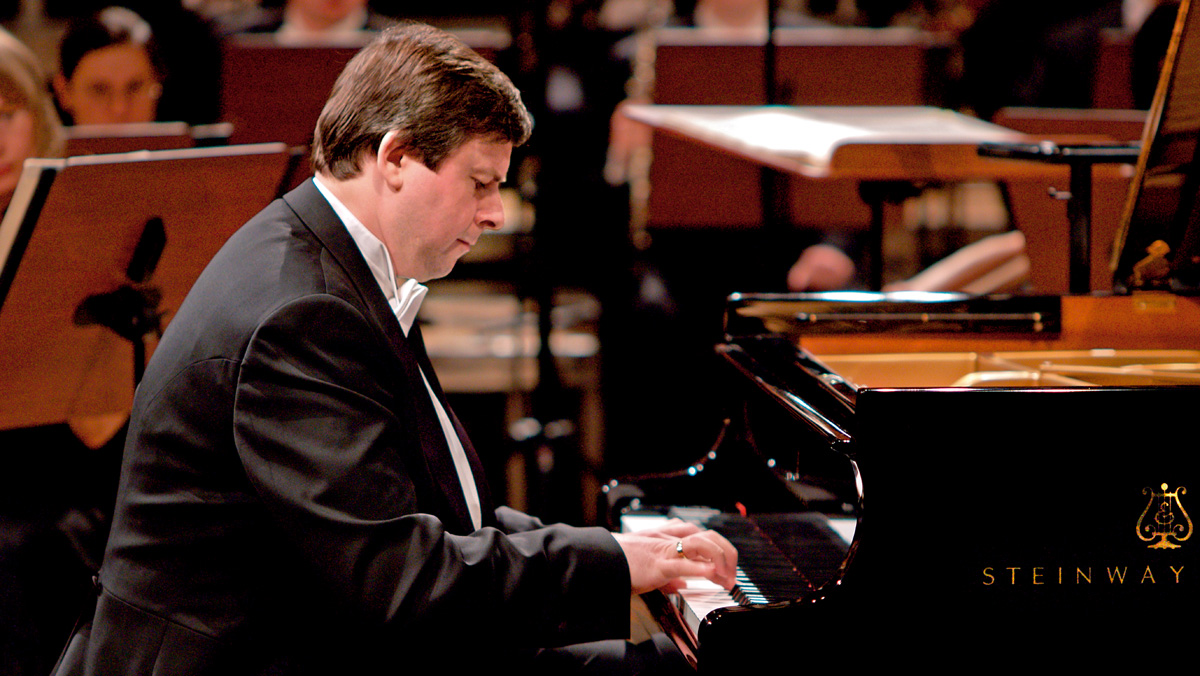
Krzysztof Jabłoński
Chopin’s contemporaries described the Trio as a work worthy of recognition and representing the best direction in contemporary music (I. Rellstab). In his review dating from 1836, Schumann wrote: Is the Trio not as noble as one could only imagine, as dream-like as no poet has yet devised, and original both in its details and in its entirety? In later years the work met with critical reservations to win its due recognition again in modern times. The Polish musicologist Andrzej Chodkowski was surely right in claiming that in the history of European music the Trio in G minor belongs, alongside the trios of Schubert, Mendelssohn and Schumann, to the most outstanding manifestations of this genre in the Romantic period.
The three works for cello and piano belong, as regards their style and artistic merit, to two different strands. The two youthful compositions – Polonaise brillante Op. 3 (written in 1829 at Antoni Radzwiłł’s estate in Antonin) and Grand Duo Concertant (written in 1832 in Paris) – belong to the first strand, while the Sonata in G minor Op. 65 (1847), one of Chopin’s last and most mature pieces, to the other.
The two youthful works have many common features. Both can be described as occasional pieces, meeting the requirements of a specific „commission”. In both, the binding conventions take precedence over individual expression. The virtuoso element is given top priority, while the texture, form and poetics follow the principles of the style brillant.
The Polonaise brillante was written for the amateur composer and cellist Antoni Radziwiłł. It has the form of a rondo with an introduction (composed, incidentally, six months after the completion of the main body of the work). The core of the piece is a distinct, easy-to-remember theme given in the exposition by the cello and later repeated by the piano. The spectacular piano part is confined to several repeated figures while the cello part, written with an amateur musician in mind, avoids difficult positions and high registers. A far more difficult and ornamental texture is employed in the introduction. Preparing the piece for publication in Paris, Chopin enriched the cello part technically, for instance adding double-stops which were not included in the original version.

Konstanty Andrzej Kulka
Grand Duo Concertant was inspired by G. Mayerbeer’s opera Robert le Diable which was premiered in the Royal Academy in Paris in November 1831. In an effort to make the success of the work even more spectacular, its publisher M. Schlésinger commissioned several of the city’s composers to write occassional pieces on themes from the opera. One of them was Chopin, a great admirer of the opera. Enchanted by its Romantic expression and theatrical effects, he willingly accepted the commission. In his piece, he paraphrased three themes from Robert le Diable: a romanza from Act 1 (Andantino), one of the choral sections (Allegretto) and the final trio (Andante cantabile). The three main movements are preceded by a piano introduction of an improvisatory character, and the work is brought to a close by the spectacular coda performed by both instruments. Grand Duo Concertant was composed with August Franchomme, the royal cellist and opera soloist, who contributed the cello part. It is proof of Franchomme’s deep insights into the technical capabilities of the cello and is evidently a vehicle to demonstrate his virtuoso skills. A salon piece above all, the Grand Duo failed to win acclaim among the critics in Chopin’s times, even though it fits perfectly the conventions of the genre and notwithstanding the fact that Chopin left his personal imprint on the piece, with his grace and refinement (Schumann).
Work on the Sonata in G minor Op. 65 was a time-consuming process for Chopin. He penned over two hundred loose sketches for the piece, surely evidence of the composer’s hard work. The initial sketch was written in 1845 in Nohant and its final version was not ready until 1847. It evoked admiration, albeit hardly universal. The work’s first movement seemed too incomprehensible to some listeners. This probably was the reason why it was deleted during the first performance of the composition, at Chopin’s last concert in Paris, on 16 February 1848. There is no doubt that Chopin the composer of the Sonata in G minor is someone different from the composer of the Sonatas in B flat minor and in B minor. The Chopin of the Sonata in G minor appears to be somewhat strange and difficult, and at the same time fascinating and thought-provoking, someone who combines simplicity with maturity, spontaneity, Beethovenian sweep and a sense of reflection and distance.
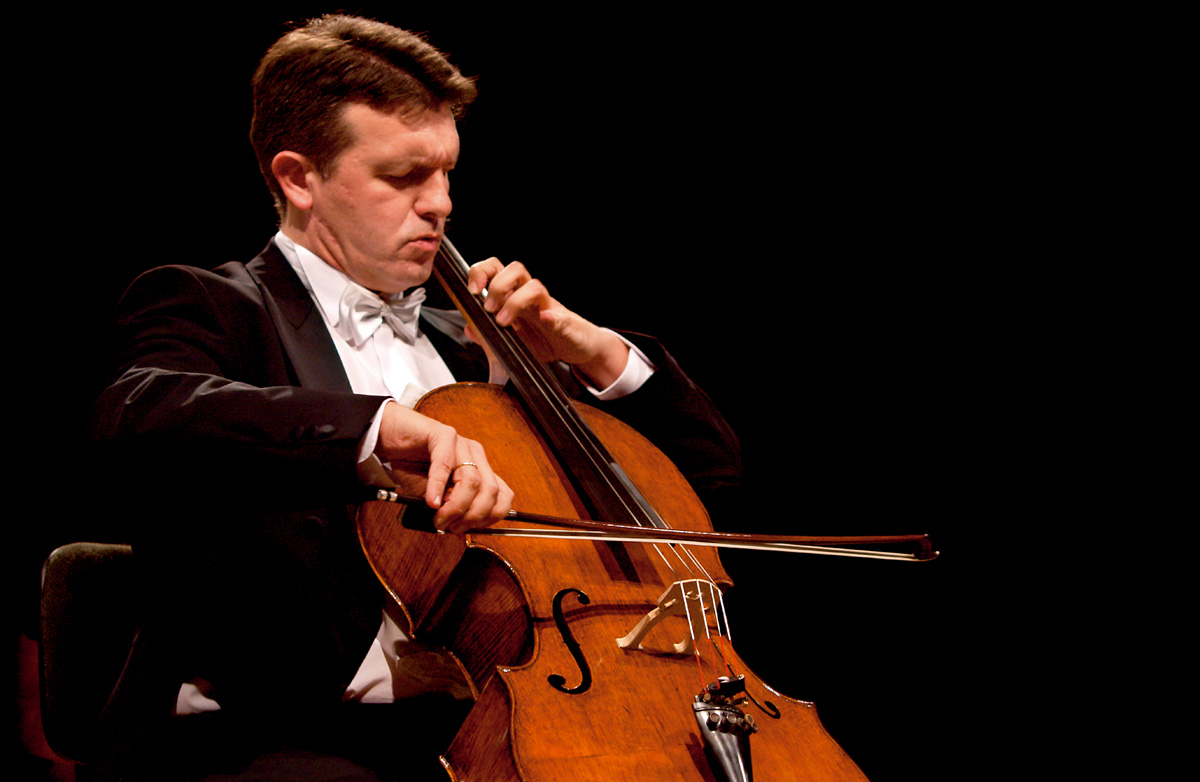
Tomasz Strahl
Formally, the Sonata in G minor is a new variant of the pattern developed in the two previous sonatas, both in reference to the opening Allegro and to the entire work. The hallmark of the new variant is the recurrent motif based on the interval of the second, which is a harbinger of late- and post-Romantic sonatas. Another important feature is the almost equal balance between the instruments, with only a slight predominance of the piano.
The first movement (Allegro moderato) introduces a ballad-like narration and A texture which anticipates Brahms. Its distinctive initial theme is followed by the main theme from the cello with the climax in the piano part and a contrasting theme (dolce), which introduces simple and quiet lyricism. The ensuing Scherzo is a dance, a sorrowful quasi-mazurka. It provides the framework for the cello cantabile in the character of a nostalgic waltz, may remind listeners of Tchaikovsky’s waltzes. The Largo is a lyrical intermezzo, striking in its simplicity, seemingly out of this world and bringing to mind arias by the heroines of Bellini’s operas. The Allegro in the rhythm of a tarantella is a peculiar rondo of Beethovenian provenance, developing towards the final apotheosis which thwarts the pessimistic tone permeating the piece.
All these anticipations and contexts are characteristic of the Sonata in G minor, which today provokes listeners with its mysterious nature and otherness. The work is representative of Chopin’s last period and is regarded almost universally as providing the most outstanding examples of the sonata genre in world music. Its peculiar charm of otherness seems to stem from the work’s pioneering character.
Marek Wieroński
Review
[…] Given a fully-detailed and well-balanced high-resolution recording PCM from the airy Lutoslavski Concert Studio of Polish Radio, and the innate understanding of the Polish dance idioms of these fine players, this is a desirable issue indeed. While some great artists have recorded these works in the past, such as Piatigorsky, Yo-Yo Ma, Martha Argerich et al., it would be hard to find more sympathetic accounts than from the Chopin Duo/Strahl collaboration.Certainly another Pearl in BeArTon’s Polish Music series, and a good disc with which to begin exploring away from standard chamber music fare.


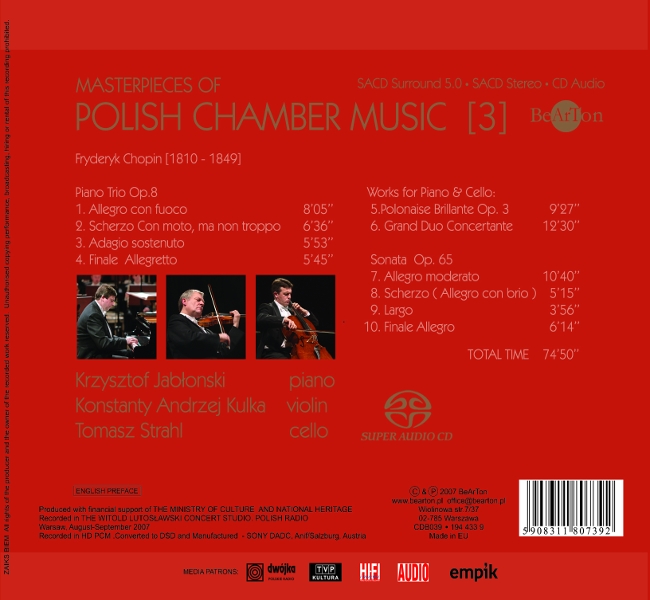



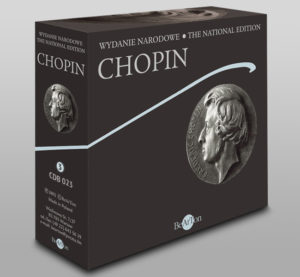
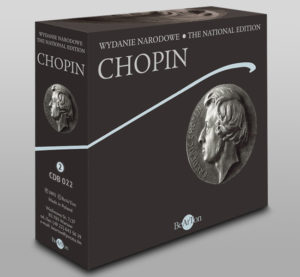
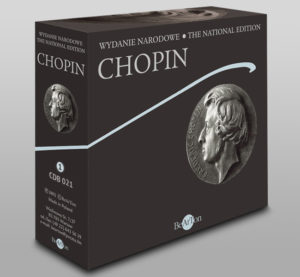
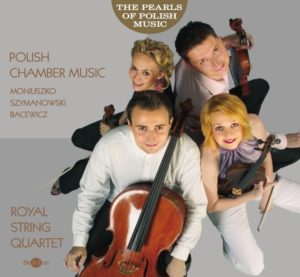
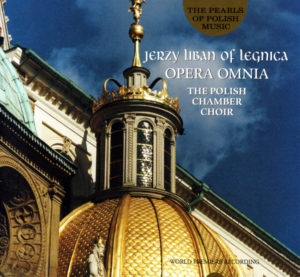
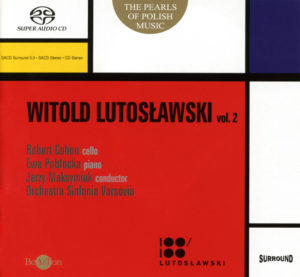
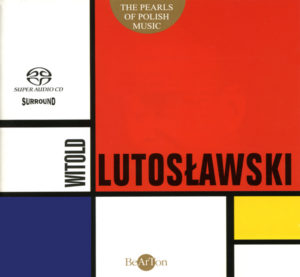
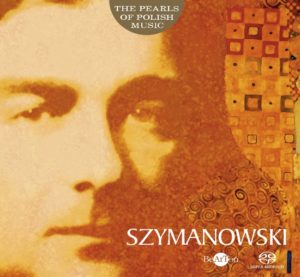
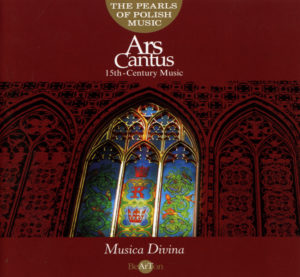
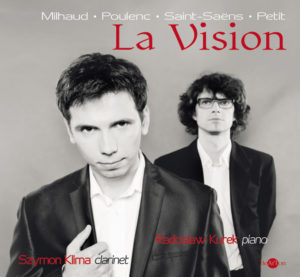
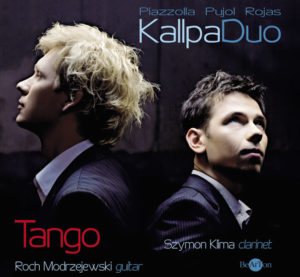
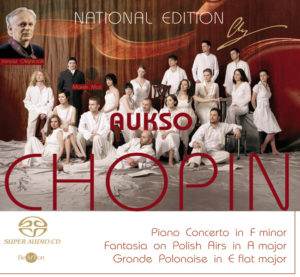
![Chopin – Walce [B] i inne utwory CDB047](https://www.bearton.pl/wp-content/uploads/Chopin-Walce-B-i-inne-utwory-CDB047-A-300x277.jpg)
![Chopin – Pieśni [B] CDB046](https://www.bearton.pl/wp-content/uploads/Chopin-Piesni-CDB046-A-300x277.jpg)
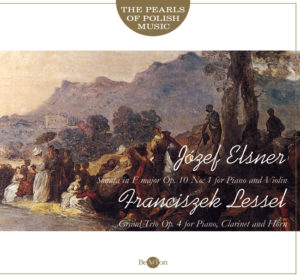

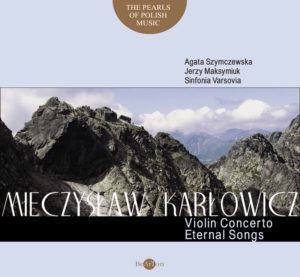
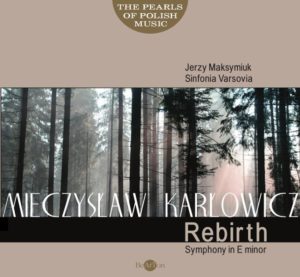
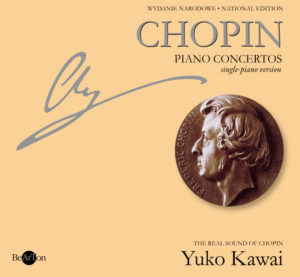
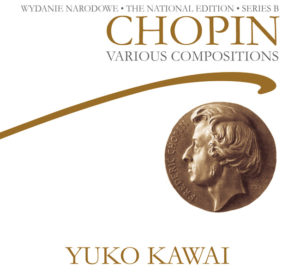
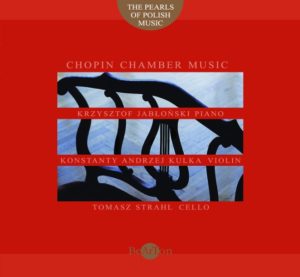
![Chopin - Mazurki i inne utwory [B] CDB038](https://www.bearton.pl/wp-content/uploads/Chopin-Mazurki-i-inne-utwory-B-CDB038-A-300x277.jpg)
![Chopin – Polonezy [B] CDB037](https://www.bearton.pl/wp-content/uploads/Chopin-Polonezy-B-CDB037-A-300x277.jpg)
